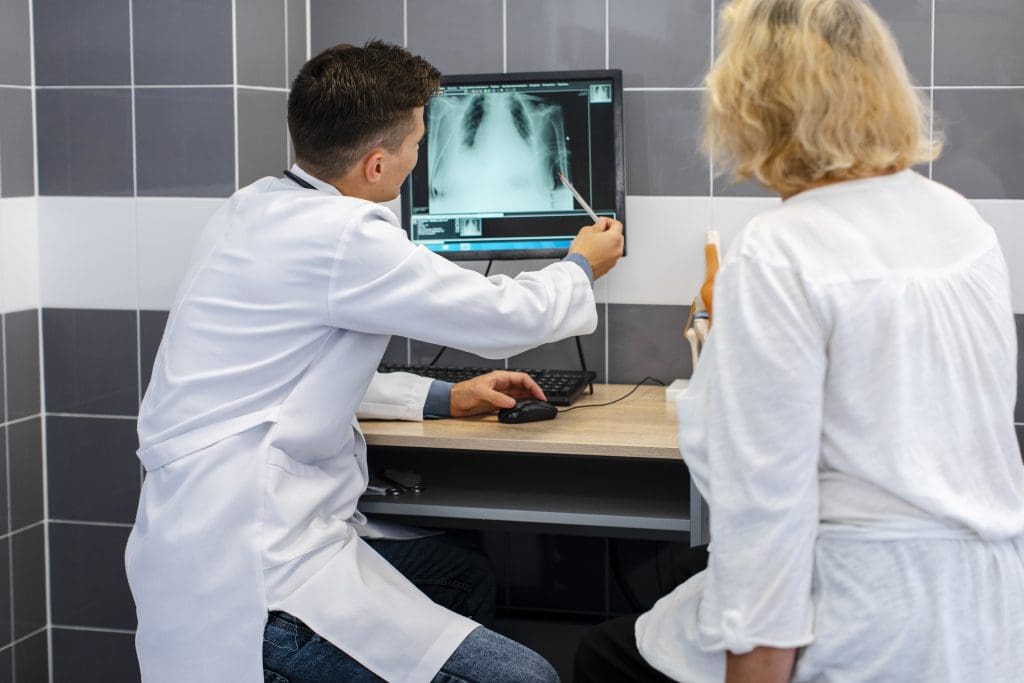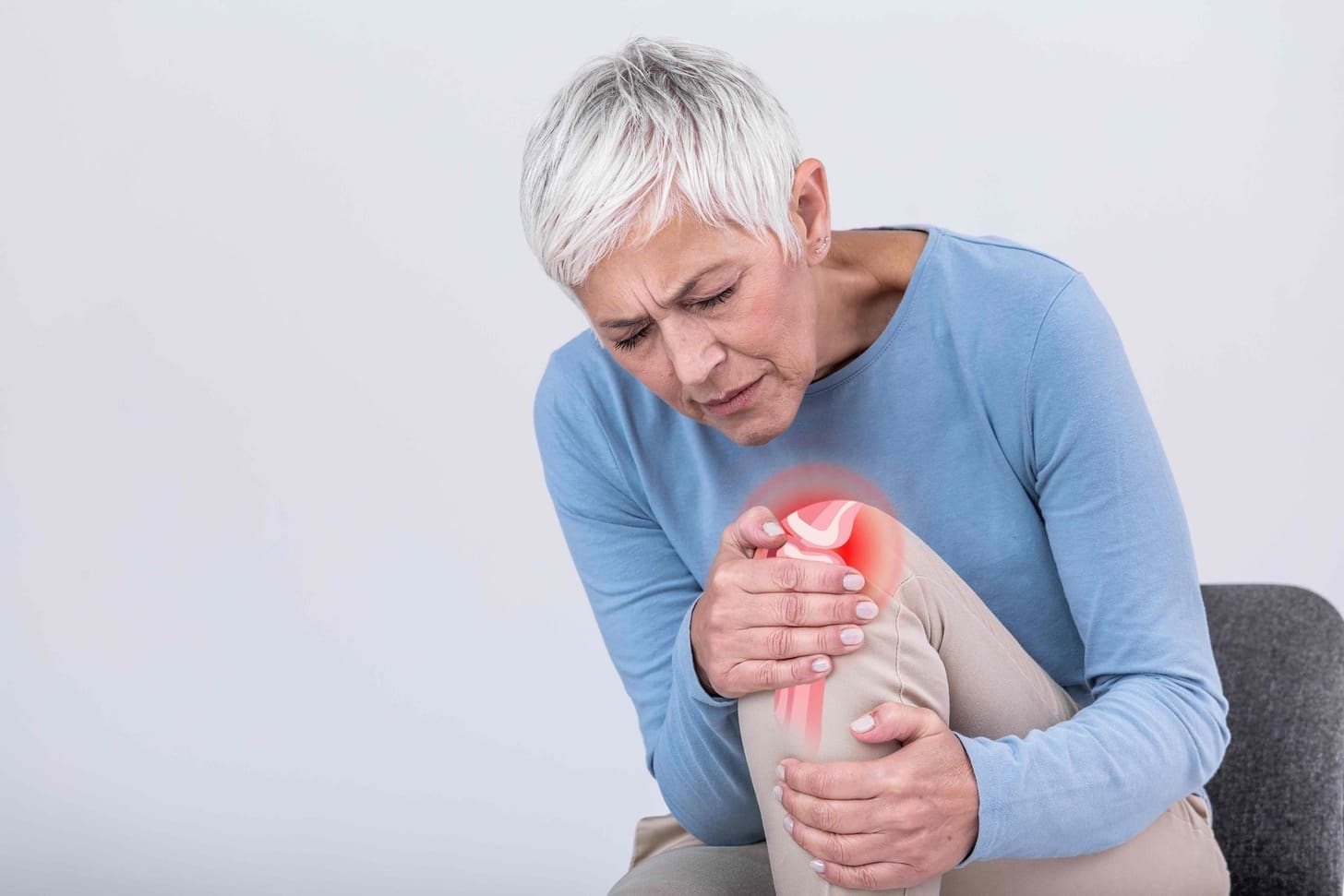Last Updated on November 26, 2025 by Bilal Hasdemir
A surprising number of people are diagnosed with lung cancer even if they never smoked. Katie Hulan, a non-smoker, was diagnosed with stage 4 lung cancer. This shows how vital early detection is.
One sign of lung cancer is a change in finger look, called finger clubbing. This can be an early sign of the disease.
Knowing the connection between finger clubbing and lung cancer helps spot the disease early. This can lead to better treatment results.
Key Takeaways
- Finger clubbing can be an indicator of lung cancer.
- Early detection is key to effective treatment.
- Non-smokers can also get lung cancer.
- Changes in finger look can be a symptom.
- Understanding the link between finger clubbing and lung cancer is essential.

Understanding Finger Clubbing and Its Significance
Finger clubbing is linked to health issues like lung cancer. It’s a condition where the fingertips grow larger. This can signal underlying health problems.
Definition of Finger Clubbing
Finger clubbing changes the shape and size of the fingertips. It also causes the nails to curve. This condition makes the fingertips look bulbous or swollen.
The exact reasons for finger clubbing are complex. They involve many physiological and pathological processes.
One key feature is the loss of the normal angle between the nail and the nail bed. This angle, called the Lovibond angle, is usually around 160 degrees in healthy people. But in finger clubbing, it’s often over 180 degrees.
Historical Recognition of Clubbing as a Medical Sign
Finger clubbing has been recognized as a medical sign for centuries. Doctors have seen it linked to diseases like respiratory and cardiovascular conditions. It’s a sign that can point to health issues that aren’t obvious.
Studies show finger clubbing has been in medical texts for centuries. Ancient Greek and Roman doctors noted its link to diseases.
Knowing the history of finger clubbing helps doctors today. It shows how important it is in modern medicine.
Lung Cancer Early Stage Finger Clubbing: The Connection
Finger clubbing is when fingertips get bigger. It’s linked to health issues, including lung cancer. This sign can show up early, helping catch the disease sooner.
How Finger Clubbing Serves as an Early Warning Sign
Finger clubbing is tied to body changes that might mean lung cancer is present. The reasons behind clubbing are complex. But, it can make people get checked out early.
Many lung cancer patients have finger clubbing. This shows how important it is to watch for clubbing as an early sign.
Timeframe Between Clubbing Appearance and Cancer Diagnosis
How long it takes to find lung cancer after clubbing shows up varies. Sometimes, it’s months or years before a diagnosis.
Finding lung cancer early, like through clubbing, can change treatment results. Knowing about clubbing and lung cancer helps both patients and doctors. It can lead to better care and survival chances.
It’s key to understand how finger clubbing relates to lung cancer. This way, people can stay on top of their health. And doctors can be more careful in their checks.
How to Perform the Finger Test for Lung Cancer
Learning how to do the finger test is key to spotting lung cancer early. The test looks for finger clubbing, where fingers get bigger and nails curve over. This could mean you have lung cancer.
The Schamroth Window Test
The Schamroth window test is easy and works well. To do it, put your fingernails together, back to back. If there’s no diamond-shaped window, it might mean you have finger clubbing.
Visual Assessment Techniques
Looking at your fingers can also help. Signs include curved nails, bigger tips, and soft nail beds. Doctors use these signs to check for finger clubbing.
To check for finger clubbing, do this:
- Look at the shape and size of your fingertips.
- Check how curved your nails are.
- See if your nail bed feels soft or spongy.
Digital Measurement Methods
Digital tools can give you exact measurements. They measure your fingertips and nail curves. This data helps track changes and see how bad finger clubbing is.
Digital clubbing treatment might be needed if you have it. If finger clubbing is from lung cancer, treating the cancer is key. Using digital tools to watch finger clubbing can help catch it early.
Stages of Finger Clubbing Development
It’s important to know the stages of finger clubbing for early detection. This condition is often linked to lung cancer and other diseases. Each stage has its own set of changes.
Early Changes in Nail Beds
The first stage of finger clubbing shows small changes in the nail beds. Early detection is hard because these changes are small. But, acting early can make a big difference.
Progressive Stages of Clubbing
As clubbing gets worse, the changes grow more obvious. The nails start to curve more, and the fingers look bulbous. This is a key time for doctors to diagnose the condition.
Advanced Clubbing Characteristics
In the last stages, the fingers and nails are severely deformed. The nails curve a lot, and the fingertips get big. At this point, it’s vital to see a doctor to find out why this is happening.
Finger clubbing is a complex issue with many causes, including lung cancer. Knowing the stages helps spot serious health problems early.
The Science Behind Finger Clubbing in Cancer Patients
Research into finger clubbing and its link to lung cancer has unveiled complex physiological mechanisms. Finger clubbing, where fingertips become enlarged, is often seen in lung cancer patients. It’s also found in other diseases.
Physiological Mechanisms
The exact reasons behind finger clubbing in cancer patients are complex. Studies show it involves changes in blood flow and certain growth factors. These factors can affect the development of clubbing.
Key factors include the release of vascular endothelial growth factor (VEGF) and other growth factors. These can increase blood flow to the fingertips, causing clubbing.
Growth Factors and Hormonal Influences
Growth factors, like VEGF, play a big role in finger clubbing. They promote angiogenesis, the formation of new blood vessels. This can make fingers appear clubbed.
Hormonal changes in cancer also affect clubbing development. Research suggests this is true.
Vascular Changes Associated with Clubbing
Vascular changes are key in finger clubbing. Increased blood flow to the fingertips, possibly due to growth factors, causes enlargement. This is what makes fingers look clubbed.
Understanding these vascular changes is vital. It helps us understand finger clubbing in lung cancer patients.
In conclusion, finger clubbing in cancer patients involves many factors. These include physiological mechanisms, growth factors, hormonal influences, and vascular changes. More research is needed. It could help us detect lung cancer earlier.
Other Medical Conditions That Cause Finger Clubbing
Lung cancer is a known cause of finger clubbing. But, other health issues can also cause this symptom. Finger clubbing is when the fingertips get bigger and the angle between the nails and the nail bed changes.
Cardiac Conditions
Some heart problems can lead to finger clubbing. Cyanotic congenital heart disease is one, where the heart doesn’t get enough oxygen. Other heart issues like infective endocarditis and atrial myxoma can also cause it. These conditions often lead to chronic hypoxia, which can cause clubbing.
Pulmonary Diseases Beyond Lung Cancer
Pulmonary diseases other than lung cancer can also cause finger clubbing. Conditions like cystic fibrosis, pulmonary fibrosis, and bronchiectasis are linked to clubbing. These diseases cause chronic inflammation and hypoxia in the lungs, leading to clubbed fingers.
Gastrointestinal and Liver Disorders
Gastrointestinal and liver problems can also cause finger clubbing. Diseases like cirrhosis of the liver, inflammatory bowel disease (including Crohn’s disease and ulcerative colitis), and celiac disease are associated with clubbing. The exact reasons are not fully understood, but chronic inflammation and malabsorption are thought to play a role.
Congenital Causes of Clubbing
In some cases, finger clubbing is present at birth. Hereditary clubbing is a rare condition that runs in families. It’s important to tell the difference between congenital clubbing and clubbing caused by a medical condition later in life.
Knowing the different causes of finger clubbing is key for accurate diagnosis and treatment. It’s a symptom that needs a detailed medical check-up to find the underlying cause.
Additional Early Warning Signs of Lung Cancer
Beyond finger clubbing, there are several other early warning signs of lung cancer. Recognizing these symptoms can significantly impact patient outcomes and improve the chances of early detection.
Respiratory Symptoms
Respiratory symptoms are often the first indicators of lung cancer. These can include:
- A persistent cough that does not go away
- Coughing up blood or rust-colored sputum
- Shortness of breath or wheezing
- Chest pain that worsens with deep breathing, coughing, or laughing
These symptoms can be indicative of lung cancer, specially in individuals with a history of smoking or exposure to carcinogens.
Systemic Symptoms
Systemic symptoms affect the whole body and can be just as telling. Common systemic symptoms include:
- Unexplained weight loss
- Loss of appetite
- Fatigue or feeling weak
- Recurring infections such as bronchitis or pneumonia
These symptoms can occur due to the body’s response to the cancer and its metabolic demands.
Less Common Early Signs
Some less common early signs of lung cancer include:
- Swelling in the face or neck due to compression of veins
- Difficulty swallowing or speaking due to tumor growth
- Hoarseness or changes in the voice
- Bone pain or fractures without apparent cause
These symptoms can be associated with the spread of cancer to other parts of the body.
It’s important to consult a healthcare professional if you or someone you know is experiencing any of these symptoms. Early detection and diagnosis can significantly improve treatment outcomes for lung cancer.
Being aware of the various early warning signs of lung cancer can empower individuals to seek medical attention promptly. This awareness can be a critical step towards improving survival rates and treatment efficacy.
Diagnostic Process After Detecting Finger Clubbing
When you notice finger clubbing, it’s important to get a medical check-up. This check-up helps find the cause of finger clubbing. It’s also key in spotting health problems like lung cancer.
Initial Medical Evaluation
The first step is a detailed medical check. A doctor will ask about your health history and do a physical exam. They will also check how severe the finger clubbing is.
This step is important. It helps decide what tests to do next. This is true if lung cancer is suspected.
Imaging Studies
Imaging tests are key in finding lung cancer, with finger clubbing as a clue. Tests include:
- Chest X-rays to spot lung issues.
- Computed Tomography (CT) scans for detailed lung images.
- Positron Emission Tomography (PET) scans to see lung activity.
These tests help find lung cancer and how far it has spread. They guide the next steps in diagnosing lung cancer with finger clubbing.
Biopsy and Confirmation Procedures
To confirm lung cancer, biopsies and tests are needed. This includes:
- Needle biopsy to take tissue samples.
- Bronchoscopy to look at airways and take samples.
- Histopathological exam to check for cancer cells.
These steps are essential. They confirm lung cancer and help plan treatment. This is all about lung cancer diagnosis.
Reliability and Limitations of the Finger Test
The finger clubbing test is a possible early sign of lung cancer. But, it’s important to know its reliability. Its effectiveness can change based on the cancer’s stage and the patient’s health.
Sensitivity and Specificity Statistics
Research has looked into how well finger clubbing works as a lung cancer test. Sensitivity is about catching those with lung cancer correctly. Specificity is about catching those without lung cancer correctly. The test is helpful but not perfect, needing more tests to confirm lung cancer.
Using finger clubbing with other tests makes it more accurate. This mix improves lung cancer diagnosis. For example, studies show it helps find lung cancer early when used with imaging.
False Positives and False Negatives
The finger test isn’t perfect. False positives happen when there’s no lung cancer. False negatives occur when there is lung cancer but no clubbing. Other health issues can cause false positives, showing the need for a full check-up.
- Finger clubbing can be linked to other health problems.
- False negatives might happen in lung cancer’s early stages.
- A detailed diagnostic process is key to confirm lung cancer.
Complementary Screening Methods
Because of the finger test’s limits, using other screening methods is vital. CT scans and biopsies are key to confirm lung cancer. These methods, along with the finger test, help get a clear diagnosis and start treatment early.
In summary, the finger clubbing test is useful for lung cancer detection. But, knowing its strengths and weaknesses is essential. By using it with other tests, doctors can better help patients.
Treatment Approaches for Lung Cancer Detected Through Finger Clubbing
Lung cancer found through finger clubbing can be treated in different ways. The treatment choice depends on the cancer’s stage, the patient’s health, and the tumor’s type.
Surgery Options
Surgery is often used for early-stage lung cancer. Surgical resection aims to remove the tumor and affected lung tissue. The decision to have surgery depends on the tumor’s location and the patient’s lung function. Minimally invasive surgical techniques can help reduce recovery time.
Radiation Therapy
Radiation therapy uses high-energy rays to kill cancer cells. It can be used alone or with other treatments. Advanced radiation techniques help target tumors precisely, reducing harm to healthy tissue.
Chemotherapy Protocols
Chemotherapy uses drugs to kill cancer cells. It can be given before surgery to shrink tumors or after to kill any remaining cells. The choice of chemotherapy depends on the lung cancer type and stage.
Targeted Therapies and Immunotherapy
Targeted therapies focus on specific molecules involved in cancer growth. Immunotherapy boosts the body’s immune response against cancer cells. These treatments are promising for advanced lung cancer or when surgery is not possible.
Lung cancer treatment has improved, using various methods to better patient outcomes. A team of healthcare professionals works together to find the best treatment for each patient.
Patient Experiences and Case Studies
Patient stories and healthcare provider insights show how important it is to spot finger clubbing early for lung cancer. This sign, though not well-known, has helped find lung cancer early in many cases. This has led to quicker treatment.
Notable Cases of Early Detection Through Clubbing
Many cases show how finger clubbing helps find lung cancer early. For example, a study in a top medical journal told of a patient found to have lung cancer early because of finger clubbing. No other symptoms were present yet.
Early detection through finger clubbing boosts treatment success. It also shows why everyone needs to know about it.
Patient Testimonials
People who found out they had lung cancer through finger clubbing share their stories. They talk about ignoring symptoms at first and then getting diagnosed. Their stories remind us to be careful and see a doctor quickly.
One patient told a cancer support group how finger clubbing was ignored until it was too obvious. This led to a lung cancer diagnosis.
Healthcare Provider Perspectives
Doctors say finger clubbing is not just for lung cancer but should be checked out. They talk about how they use finger clubbing to help figure out what’s wrong.
“Seeing finger clubbing in patients makes us think of many possible problems, including lung cancer. It’s a sign that tells us to dig deeper,” said a pulmonologist.
Putting together patient stories, case studies, and doctor views gives a full picture of finger clubbing’s role in finding lung cancer. It shows we need to keep learning and spreading the word about this important sign.
When to Consult a Healthcare Professional
It’s important to know when to see a doctor for lung cancer symptoms. Finger clubbing is a sign that needs medical attention.
Risk Factors That Warrant Immediate Attention
Some people are more likely to get lung cancer. This includes smokers, those with a family history, and those exposed to harmful substances like asbestos or radon. If you have finger clubbing and fit into one of these groups, see a doctor right away.
- Smoking history
- Family history of lung cancer
- Exposure to carcinogens (asbestos, radon)
Preparing for Your Doctor’s Appointment
Before your doctor visit, gather info about your symptoms and health history. Make a list of your symptoms, including when they started and what makes them better or worse.
Tips for preparation:
- List all your symptoms
- Note your medical history
- Bring any relevant medical records
Questions to Ask Your Healthcare Provider
Having questions ready can make your appointment more useful. Ask about finger clubbing causes, the tests you’ll need, and treatment options if you have lung cancer.
- What could be causing my finger clubbing?
- What diagnostic tests will be needed?
- What are my treatment options if I have lung cancer?

Conclusion
Learning about the connection between finger clubbing and lung cancer is key. It helps raise lung cancer awareness and promotes early detection. Recognizing finger clubbing signs and other lung cancer symptoms can lead to better health.
The link between finger clubbing lung cancer shows the need for watchfulness and quick medical checks. If you see any odd finger changes or other lung cancer signs, see a doctor right away.
Spotting lung cancer early can greatly improve treatment success. Being informed and acting quickly can boost your chances of a good outcome.
FAQ
What is finger clubbing, and how is it related to lung cancer?
Finger clubbing is when your fingertips get bigger and the angle between your nails and the nail bed changes. It can be a sign of health problems, like lung cancer.
How can I perform the finger test for lung cancer?
To do the finger test, look for finger clubbing. You can use the Schamroth window test, visual checks, and digital measurements. These help spot changes that might mean lung cancer.
What are the stages of finger clubbing development?
Finger clubbing goes through stages. It starts with small changes in the nail bed. Then, it gets more noticeable and can become severe.
Is finger clubbing exclusive to lung cancer?
No, finger clubbing can happen for many reasons. It’s not just lung cancer. It can also be caused by heart problems, other lung diseases, and even some genetic conditions.
What are the additional early warning signs of lung cancer?
Signs of lung cancer include breathing problems and other symptoms. You might also notice changes in your voice or trouble swallowing.
How is lung cancer diagnosed after detecting finger clubbing?
After finding finger clubbing, doctors will check you first. Then, they might use imaging and take a biopsy to confirm lung cancer.
How reliable is the finger test for lung cancer detection?
The finger test isn’t perfect. It’s not always accurate. Always see a doctor for a proper diagnosis.
What are the treatment approaches for lung cancer detected through finger clubbing?
Lung cancer treatment depends on the stage and type. Options include surgery, radiation, and different types of chemotherapy.
When should I consult a healthcare professional regarding finger clubbing and possible lung cancer symptoms?
See a doctor if you notice unusual symptoms, like finger clubbing. If you’re at risk, don’t wait. They can help figure out what’s wrong and what to do next.
What are the risk factors that warrant immediate attention for lung cancer?
Certain things increase your risk of lung cancer. These include smoking, being exposed to harmful substances, family history, and some genetic conditions. If you’re at risk and have symptoms, get checked right away.
How can I prepare for my doctor’s appointment regarding possible lung cancer symptoms?
Before your doctor’s visit, write down your symptoms and medical history. Also, think of any questions you have. This will help your doctor understand your situation better.
What questions should I ask my healthcare provider about lung cancer and finger clubbing?
Ask about how they’ll diagnose lung cancer and what treatments are available. Also, ask about the finger test’s accuracy and if more tests are needed.






